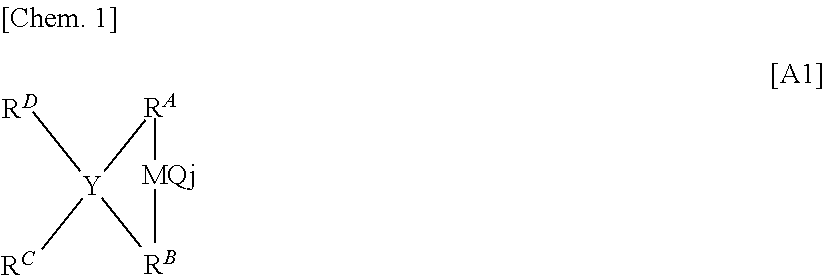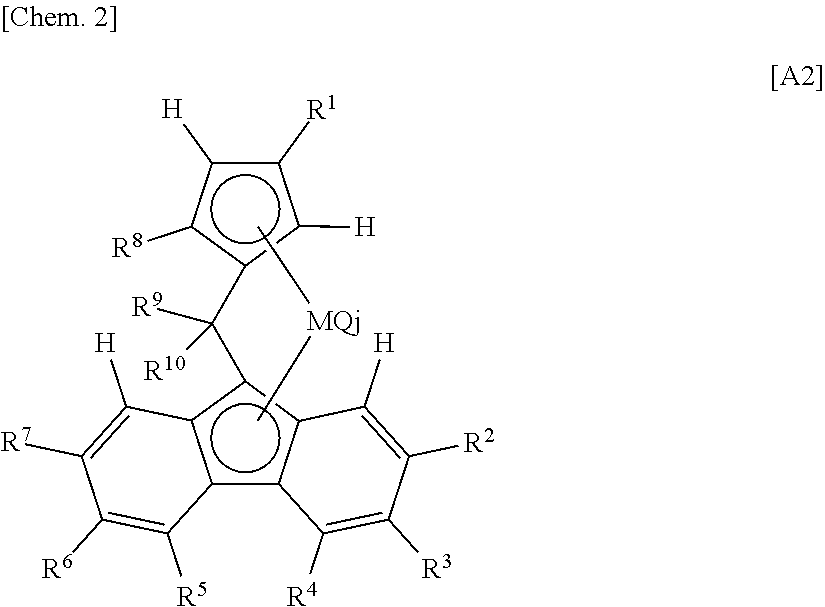4-methyl-1-pentene polymer, resin composition and molded article
- Summary
- Abstract
- Description
- Claims
- Application Information
AI Technical Summary
Benefits of technology
Problems solved by technology
Method used
Image
Examples
example 1
(Polymer [X-1])
[0166]A SUS polymerization vessel (internal capacity: 1 L) equipped with a stirrer was charged with 425 mL of purified decane and 0.5 mL (1 mol) of a decane solution of diisobutyl aluminum hydride (2.0 mmol / mL based on an aluminum atom) at room temperature under a stream of nitrogen. Subsequently, 0.0005 mmol (based on a zirconium atom) of the preceding decane slurry (A-2) of the prepolymerization catalyst component of the catalyst (A) prepared was added thereto, and 50 NmL of hydrogen was charged thereinto (first hydrogen charging). Subsequently, the polymerization vessel was continuously charged with 250 mL of 4-methyl-1-pentene at a given rate over 2 hours. The start of this charging was referred to as the start of polymerization. The temperature was increased to 45° C. over 0.5 hours from the start of polymerization and then kept at 45° C. for 4 hours. 90 NmL of hydrogen was charged thereinto 3 hours after the start of polymerization (second hydrogen charging). Af...
example 2
(Polymer [X-2])
[0167]120 g of a polymer [X-2] was obtained by the same reaction as in Example 1 except that the decane slurry (B-2) was used instead of the decane slurry (A-2). Results of measuring physical properties are shown in Table 1.
example 3
(Polymer [X-3])
[0168]115 g of a polymer [X-3] was obtained by the same reaction as in Example 1 except that the decane slurry (C-2) was used instead of the decane slurry (A-2), and the polymerization temperature was set to 100° C. Results of measuring physical properties are shown in Table 1.
PUM
| Property | Measurement | Unit |
|---|---|---|
| Temperature | aaaaa | aaaaa |
| Length | aaaaa | aaaaa |
| Angle | aaaaa | aaaaa |
Abstract
Description
Claims
Application Information
 Login to View More
Login to View More - R&D
- Intellectual Property
- Life Sciences
- Materials
- Tech Scout
- Unparalleled Data Quality
- Higher Quality Content
- 60% Fewer Hallucinations
Browse by: Latest US Patents, China's latest patents, Technical Efficacy Thesaurus, Application Domain, Technology Topic, Popular Technical Reports.
© 2025 PatSnap. All rights reserved.Legal|Privacy policy|Modern Slavery Act Transparency Statement|Sitemap|About US| Contact US: help@patsnap.com


